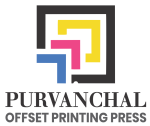Sublimation printing is one of the best techniques for printing designs on mugs. It allows for full-color prints and can be used for complex, photo-like images. Here’s a breakdown of how you can design and print on mugs using sublimation:
Step-by-Step Guide to Mug Design & Sublimation Printing
1. Design Creation
Software Choice: Use design software like Adobe Illustrator, Photoshop, or free alternatives like Inkscape or GIMP. Make sure the resolution is set to 300 DPI for sharp, clear designs.
Design Size: The typical printable area on a mug is 8.5” x 3” (21.5 cm x 7.6 cm). Ensure your design fits within this size, leaving a small buffer around the edges.
Use of Vivid Colors: Sublimation works best with bright, vibrant colors, especially on white or light-colored mugs. You can achieve smooth gradients, intricate details, and realistic effects (perfect for images or photographs).
2. Prepare Your Design for Sublimation
Color Mode: Set your design to RGB mode rather than CMYK. RGB works best for sublimation since it translates well to the digital printing process.
Mirroring the Image: Before printing, remember to mirror the image if you have text or elements that need to face the correct way when viewed on the mug.
3. Print the Design
Sublimation Printer: Use a sublimation printer (such as Epson or Sawgrass). This printer uses special ink that turns into a gas when heated and bonds to the mug’s surface.
Sublimation Paper: Print your design on sublimation transfer paper using your sublimation printer. Make sure the paper is sized appropriately to the mug’s printable area.
4. Mugs and Coatings
Mug Material: Sublimation only works on mugs with a special polymer coating or a polymer-coated ceramic surface. Make sure the mugs you’re using are compatible with sublimation. Most blank white mugs are ideal for sublimation.
Mug Color: It’s best to print on white or light-colored mugs for the brightest results. Dark-colored mugs require special coating or may not work as well with sublimation.
5. Heat Pressing the Mug
Heat Press Machine: Place the printed transfer paper onto the mug, ensuring it’s securely taped on. Use a sublimation mug press (specially designed for mugs) to heat the mug. The heat press will transfer the design onto the mug by applying heat and pressure, allowing the ink to turn into gas and bond with the mug’s surface.
Temperature & Time Settings:
Temperature: 385°F (196°C)
Time: 3-4 minutes depending on the machine and mug size.
Make sure to follow the instructions for your specific heat press and mug type.
6. Finishing Touches
Cooling: After removing the mug from the heat press, allow it to cool down completely before handling.
Quality Check: Once cooled, check your print for any imperfections. The design should be vibrant and seamlessly integrated into the mug surface.
Design Tips for Sublimation Printing on Mugs
Bold Designs: Keep designs bold and simple, as intricate details can sometimes get lost on the small mug space.
Wrap-Around Designs: Sublimation allows you to print around the entire mug. Consider creating a full-wrap design or a design that flows across the front and back.
Personalization: Adding names, dates, or messages works great for gifts and promotional items.
Avoid White Areas: Since sublimation uses a heat press, the blank white areas of the mug won’t retain any design or color. Use colors to fill the space as much as possible for the best results.
High-Contrast Colors: If printing on a light-colored mug, using high-contrast colors can make your design pop and stand out more.
Advantages of Sublimation Mug Printing
Durability: Sublimation prints are permanent and won’t fade, peel, or crack.
Vibrant Colors: You can get photo-quality, vibrant, and intricate designs that look professional.
Full Coverage: You can print edge-to-edge, covering the entire surface of the mug.

We believe that every print job should make a lasting impression. That’s why we’ve dedicated ourselves to delivering high-quality printing services and exceptional customer care.